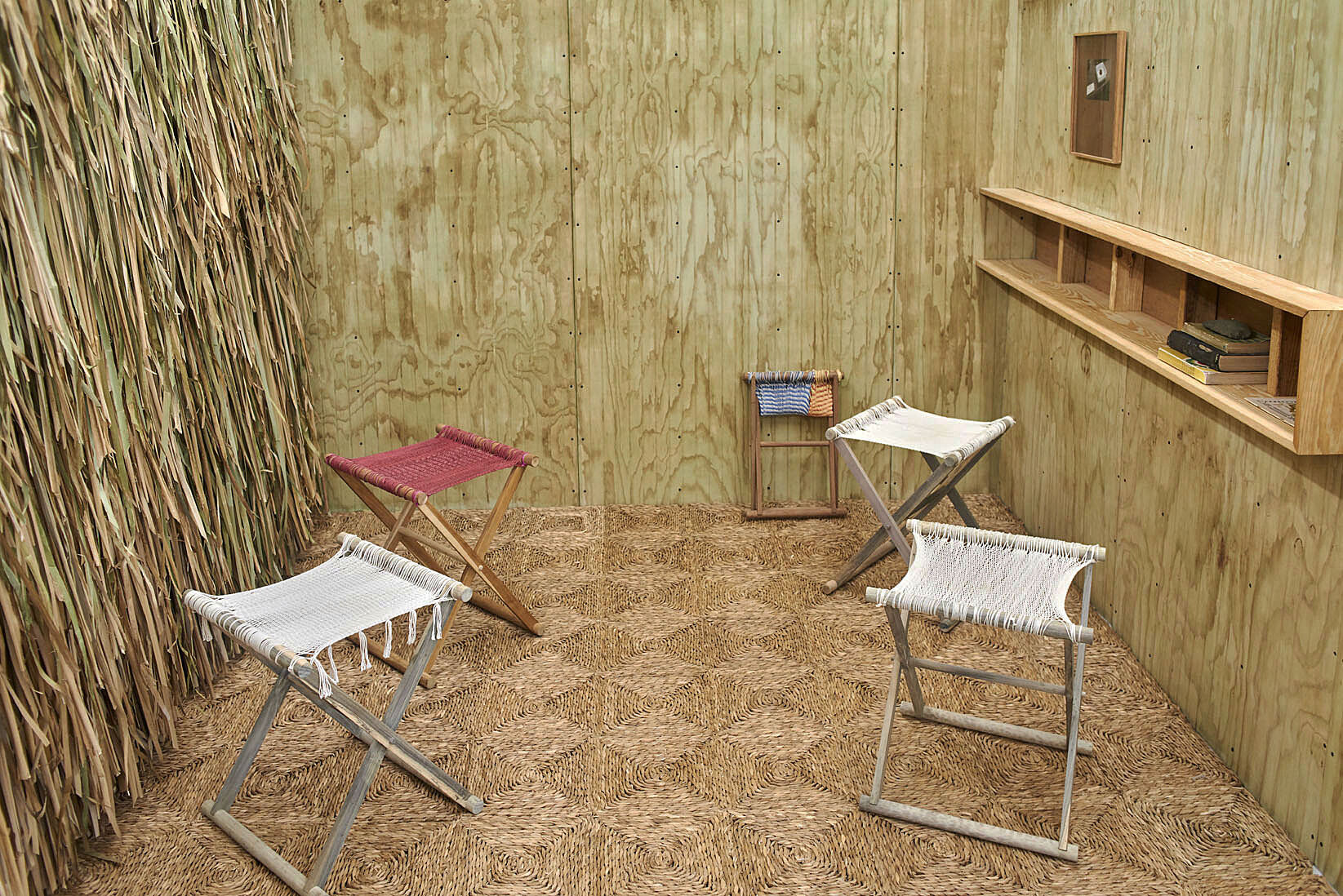Pacha, Llaqta, Wasichay: Indigenous Space, Modern Architecture, New Art | Art & Artists
July 13–Sept 30, 2018
Pacha, Llaqta, Wasichay: Indigenous Space, Modern Architecture, New Art | Art & Artists
Jorge González
3
Jorge González’s work draws inspiration from Puerto Rican vernacular traditions, modernist architecture, and Taíno art and cultural expressions. For this exhibition, he has created a site-specific installation titled Ayacabo Guarocoel. The two main elements —the accordion-like roof and the the enea (cattail) walls—represent the meeting of two vernacular traditions on the island. Gonzalez also displays a number of Taíno objects and furniture pieces, newly made by the artist and local artisans in Puerto Rico. Each object present in his space will be made with locally sourced materials, using traditional weaving and construction methods. Bringing forth ideas of collective learning and the sharing of Indigenous craft methodology across generations, the installation also serves as a tribute to the families that have preserved and disseminated the use of materials, techniques, and designs native to the island. González invites the public to activate the space by engaging in readings and performers will lead formal readings throughout the duration of the exhibition. He will also lead a ceramics workshop.

